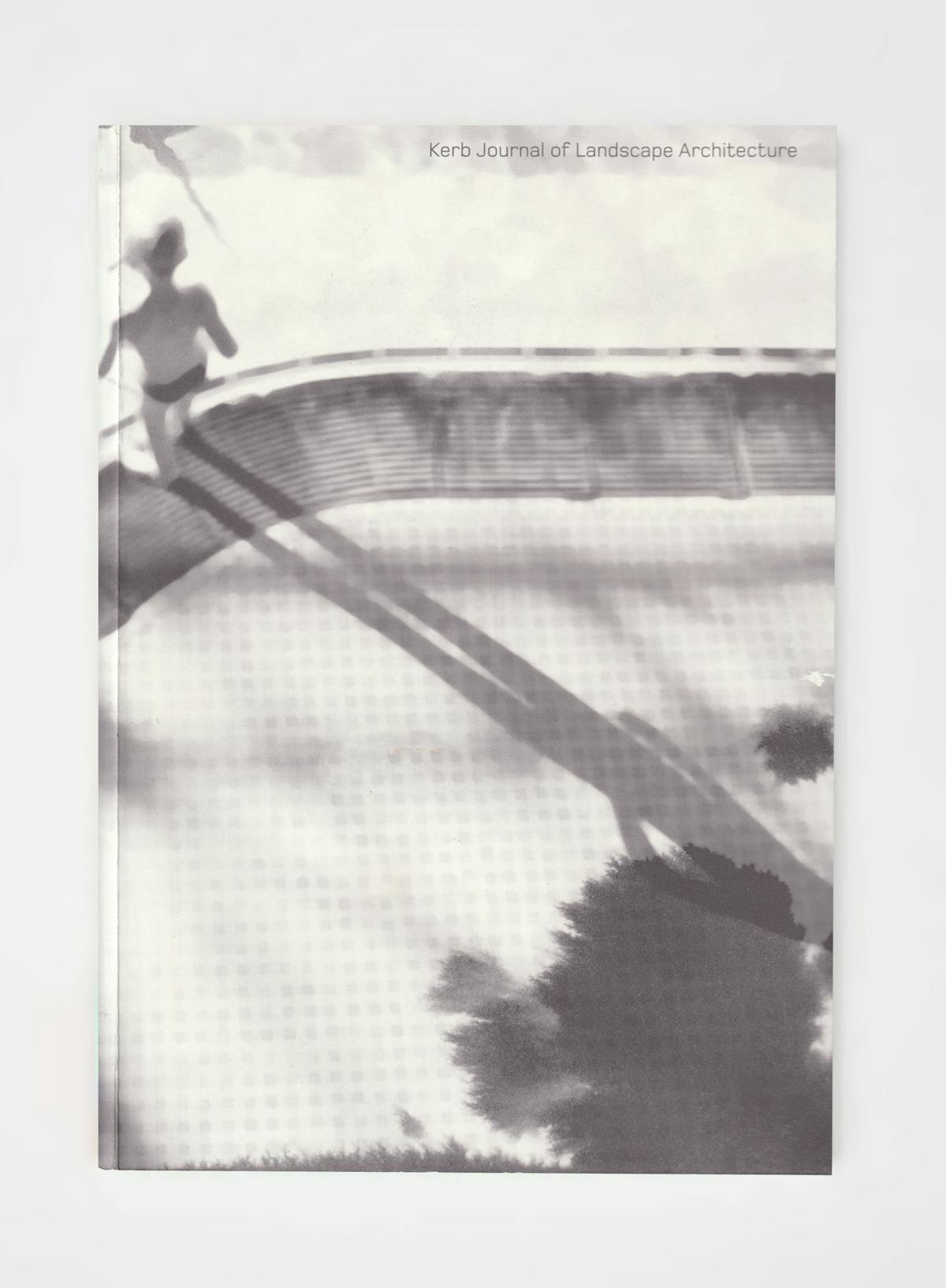If you set off for Docklands down Latrobe Street, perhaps driving in slow, bound-for- Telstra Dome-traffic, between February and August this year, you would have been arrested by the sight of the baths installation on the corner of Queen Street.
The Dry installation is apparently simple. The quite precise scaling and construction of the idea using a minimal number of elements that gives the impression of ease, a single cohesive gesture, requires no words to explain itself to the passer by. The installation is particularly well conceptualised for its site on the façade of the Republ Republic building. From a landscape architecture point of view it is exciting that the building has a changing relationship with the street (with each new installation) and relationship that negotiates between architecture and street. In both pushing out in the convex arrangement of the baths and receding above in a concave a billboard with a graphic of blackened willow branches, the installation offers a range of scales that intermediate between human (bath-sized) landscape (tree-sized) and architecture (Republic Tower and surrounding skyscrapers).
The forty-five baths, each with blackened willow branch inserted, make for a witty and surprisingly elegant visual. Implicit in our associations with baths and dead branches, the work makes a strong connection between rural and urban drought conditions that is often only understood as statistics affecting someone else. The pavé of baths mimics the blister packaging of medication, jokingly offering its own form of drought relief, as well as the idea of water as a commodity.
The artist’s intention was to provoke thoughts about the Australian landscape, water restrictions and the summer bushfires. Inspiration came from a hedge of willows on his farm which was suffering the effects of the drought over summer. These dead willow braches were then inserted into the bath structures. Bakker identifies that bathtubs are a strong part of the Australian landscape and life, being used as drinking troughs for stock as well as eskies at parties.
The artist intentionally left the baths and their contents exposed rather than screened over for protection. In fact the stark contrast of the branches to the smooth recesses of the baths emphasises an idea that personal water consumption could be revealed for public knowledge. Baths don’t have to be wet to be slippery but this did not inhibit several individuals from attempting to scale the installation using the inserted dried willow branches as handrails. While this perhaps demonstrates an unprecedented willingness to engage with public art, the artist agrees the feats are more likely lubricated off-site than spontaneously excited by the work. Then again, perhaps this is cynicism and the protagonists, a ruminating urban herd, were siting a link to John Kelly’s Cow up a Tree sculpture at Docklands!
Coming from the Netherlands, Joost Bakker grew up on reclaimed land surrounded by windmills to keep his property dry. He arrived on a farm in Australia in the drought of 1982 which made an everlasting impression him. The practical skills of the farm, along with a passion for both industrial design and horticulture, has situated Joost where he is today. He is currently working with plants as a sculptural media on multitudinous levels: “I see more beauty in the leaf, stem or the bulb-root while others look only at the flower it is understanding where something has originated from or its growing habit that allows me to create installations that work both visually and practically. Surprising people with nature is my aim I don’t care if they like it as long as people think about the work.’
